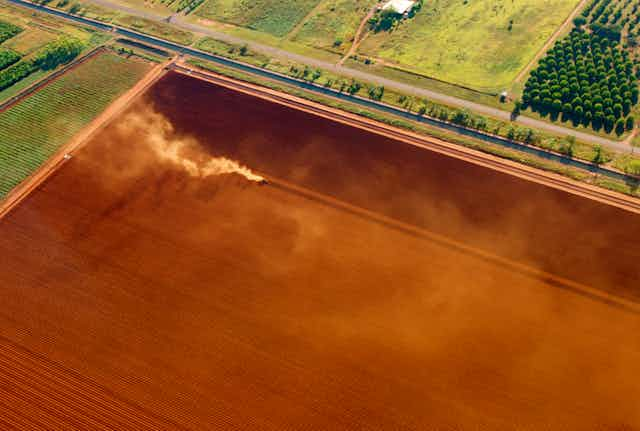This article is part of our series on the Science and Research Priorities recently announced by the Federal Government. You can read the introduction to the series by Australia’s Chief Scientist, Ian Chubb, here.
John Gunn
Chief Executive Officer of the Australian Institute of Marine Science
Australia’s soil, water, vegetation and biodiversity, and our vast marine estate, are incredibly valuable national assets. They are fundamentally interconnected components of the continent’s diverse, unique and in many instances fragile ecosystems.
As such, they need to be managed effectively. However, significant gaps in our understanding of each of these components, and the ways in which they interact, need to be addressed to support effective management.
The Australian Government’s Science and Research Priorities recognise these gaps. They call for focusing of our efforts on critical systems such as the Great Barrier Reef, Northern Australia, key agricultural regions, aquifers and urban catchments.
And they identify priority research that will lead to:
New and integrated national observing systems, technologies and modelling frameworks across the soil-atmosphere-water-marine domains
Better understanding of sustainable limits for productive use of soil, freshwater, river flows and water rights, terrestrial and marine ecosystems
Minimising damage to, and developing solutions for, restoration and remediation of, soil, fresh and potable water, urban catchments and marine systems
The output from investments in these priority areas will be an enhanced capacity for predicting the impacts of global change and of development on natural systems. Importantly it will also provide much needed understanding of the adaptive capacity of terrestrial and marine ecosystems.
This improved evidence base should in turn provide for better decision making strategies in the context of potentially conflicting demands between development, the environment and landscape management.
Neil McKenzie
Chief Research Scientist, CSIRO Agriculture Flagship at CSIRO
Unprecedented demands are being placed on the world’s soil resources, and by 2050 they need to support a 70% increase in food production. However, arable land is finite and major crops are reaching yield plateaux. Better soil management is needed to conserve nutrients, improve water-use and reduce emissions. Climate change also compounds the situation.
Some of Australia’s soil management challenges are immediate and obvious, such as widespread soil acidification of cropping lands. Others are more subtle but just as important, such as erosion and nutrient imbalances.
We need to improve soil management across the continent. This requires new diagnostic systems for determining when and where soil function is being compromised. Australia also needs more effective institutional arrangements for providing information on the condition of our soil resources.
Research investment in these areas will generate large economic returns through increases in agricultural productivity and avoided costs in other soil-dependent industries. This is before we consider the equally large environmental benefits.
At the global scale, improved soil management is needed in nearly all countries. Without these changes, food-price volatility is likely to increase and this will potentially send millions of people into poverty. This is avoidable but only if there is a concerted response by individuals, the private sector and governments.

Paul Bertsch
Deputy Director-Science of Land and Water Flagship CSIRO and Honorary Professor of Soil and Environmental Sciences, University of Queensland
The Soil and Water research priority represents a critical area of research having significant national and international benefits, outcomes and impacts, as well as being one that differentiates the Australian R&D enterprise from most other global R&D efforts in several ways.
First, specific recognition of the soil resource is not common in national strategies. This is even though soil is a non-renewable resource (on multi-generational time scales) that underpins key life support systems, such as nutrient cycling, carbon sequestration, food, fibre, animal feed and biofuel feedstock production. It also represents one of the earth’s most complex and biologically diverse ecosystems.
A healthy soil resource is also inextricably linked to water quality and quantity as well as serving as a major source of novel antibiotics, anticancer drugs, and enzymes which provide multiple benefits to society;
Secondly, having a research priority that links the soil resource with water resources, including surface and groundwater as well as marine systems, explicitly provides recognition of the controls, interconnectedness and feedbacks between these critical life supporting resources
Finally, combined research priorities amplify the requirement to manage these resources, integrating multiple land uses across natural and managed ecosystems and catchments, that involve agriculture, resource and energy extraction, urban and peri-urban uses, necessarily requiring a full life-cycle consideration of cumulative impacts to soil and water resources, including estuaries and marine systems.
Read more in our Science and Research Priorities series
The future of manufacturing in Australia is smart, agile and green
Research priority: make Australia’s health system efficient, equitable and integrated
Australia could become a leader in cybersecurity research
On the road: research can improve transport across Australia

